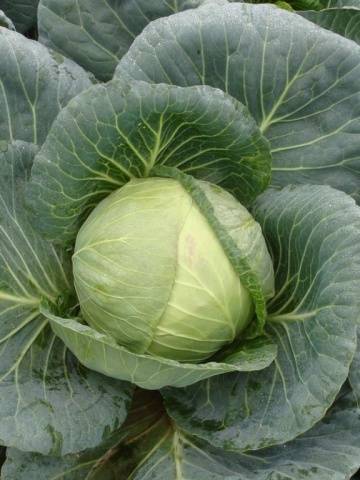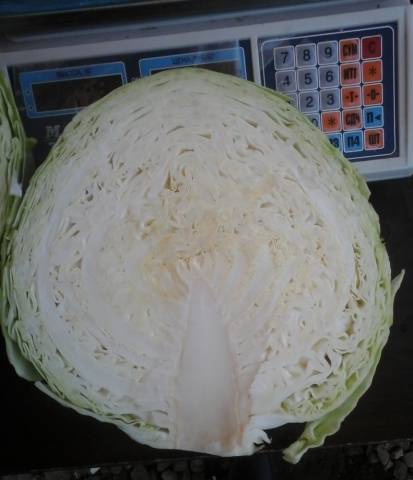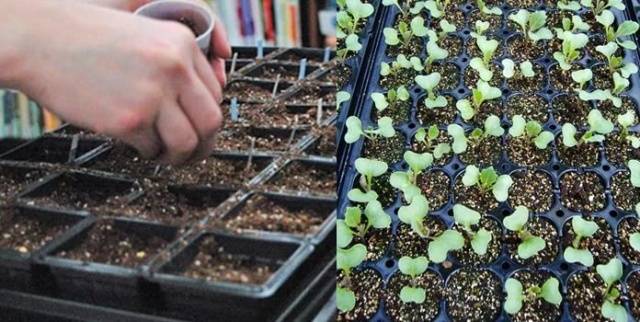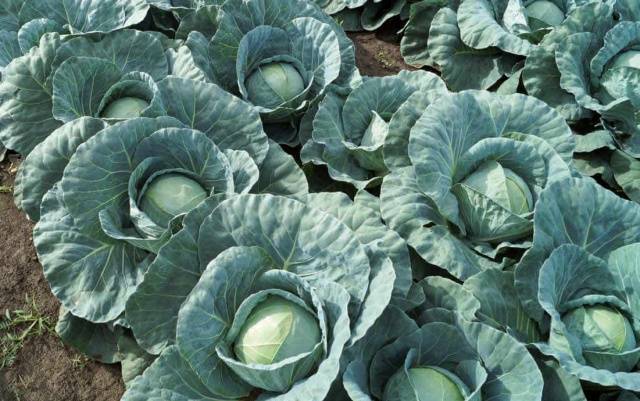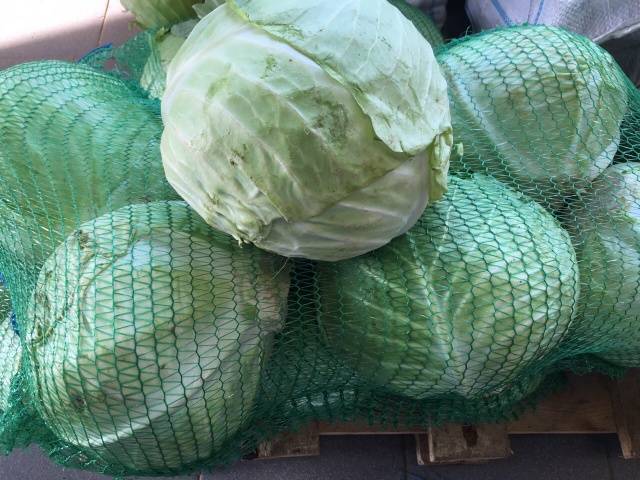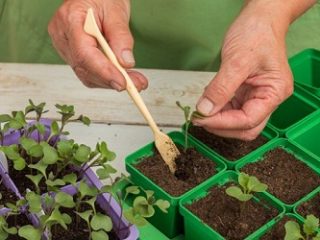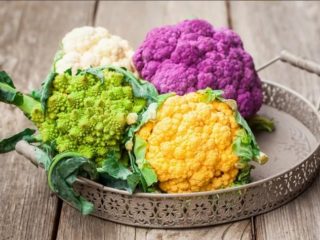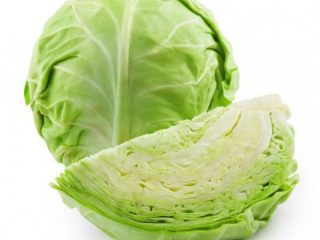Content
White cabbage is considered a versatile vegetable. It can be used in any form. The main thing is to choose the right variety. Unfortunately, today this is not so easy to do, since breeders expand the range every year. In order not to be mistaken, you need to know the features of the selected variety, taste and culinary possibilities. Cabbage Tobia F1 is one of the varieties that are popular among gardeners and housewives for their unique properties.
Description
The Tobia hybrid was created by Dutch breeders. Since 2005, cabbage has been in the State Register of the Russian Federation. The variety is recommended for growing in the private sector and on a large industrial scale in many regions of our country.
The Tobia hybrid belongs to the early maturing varieties. Cabbage reaches technical maturity in 90 days from the moment of germination. The outer stump is small, the plant does not rise high above the ground. Therefore, cabbage receives accelerated nutrition, nutrients work for the formation of a head of cabbage.
The upper and integumentary leaves are dark green, with a waxy bloom, are distinguished by their density and low pimples. There are subtle waves along the edge. During ripening, the leaves curl so tightly into forks that there are practically no gaps in the cut. The middle of the head is white or slightly yellowish.
The mass of Tobia cabbage according to the description of the variety and reviews of gardeners is about 5 kg. Subject to agricultural technology, you can get forks weighing up to 7 kg. Heads of cabbage are round-dense. The lower leaves are close to the ground. The veins are light green, well visible on the sheets, but not too hard.
Characteristic
The description of the cabbage does not always give a complete picture of the variety. To decide to grow, you need to get acquainted with the characteristics, advantages and disadvantages.
Dignity
- Tobia cabbage is juicy, without bitterness, slightly sweetish. The leaves are thin, without coarse veins.
- Even overripe heads of cabbage do not crack.
- The variety is high-yielding, up to 20 kg is harvested from a square meter, subject to agricultural technology. If we consider the yield on an industrial scale, then up to 100 tons are harvested from one hectare.
- Excellent portability.
- This white-headed vegetable is intended for outdoor cultivation.
- The versatile hybrid is widely used in cooking. Pickled and sauerkraut are especially tasty.
Minuses
Gardeners do not notice any particular drawbacks in the Tobia F1 variety, although they are:
- short fresh storage period - no more than three months;
- the proximity of the leaves to the soil and abundant watering lead to decay.
Since the variety has a minimal amount of negative sides, Tobia cabbage takes its well-deserved place in the beds of Russians.
Growing seedlings
Judging by the description and characteristics, Tobia cabbage is an early ripe white vegetable. When planting seedlings at different times, you can get heads of cabbage, starting from June until autumn. The hybrid is grown mainly through seedlings.
Sowing has been done since the first days of April. By the time of planting in the ground, the seedlings have time to grow.
The soil
Strong and healthy kale of the Tobia hybrid grows when agronomic standards are applied. You need to start with preparing the land. Cabbage of this variety is a lover of loose fertile soil. You can use store formulas, but most often gardeners prepare the soil on their own.In addition to the sod land, compost, peat, humus are added. Fresh manure is not added at the seedling level.
For cultivation, use boxes with a depth of at least 6 cm, containers, cassettes or nurseries on the street. The soil can be prepared in different ways:
- warm up in the oven;
- spill pink boiling water (dissolve potassium permanganate).
Seed material
According to the reviews of gardeners who have been dealing with Tobia cabbage for more than one year, the germination of store seeds is almost one hundred percent. Preparation stages:
- Selection. Large specimens are selected, puny and dubious grains are discarded.
- Hardening. Transfer cabbage seeds to cheesecloth and immersed in hot water (no more than 50 degrees) for a third of an hour. Then cooled in cold water.
- Etching. For 10-15 minutes, seeds in a gauze bag are immersed in a pink solution of potassium permanganate to prevent black leg. Then it is washed with clean water.
- Stratification. Cabbage seeds in gauze are placed in the refrigerator on the vegetable shelf. A day later, white strings of roots hatch.
The seeds are ready, you can start growing seedlings.
Sowing
Seeds can be sown in a common nursery for subsequent picking or in separate cassettes or cups, peat tablets.
Growing seedlings of Tobia cabbage without diving is a convenient way, because when transplanted to a permanent place, the plants are not injured, they take root quickly. The only drawback is an increase in the amount of seed, since you have to sow 2-3 seeds in each cassette. Then leave the strongest seedling.
When sown in a common nursery, the seeds are buried 1 cm with a step in the groove of at least 3 cm. Then they are covered with glass or film to create a greenhouse effect. Cabbage seeds sprout faster if the containers are kept at a temperature of 20 to 22 degrees. After the first shoots, it must be reduced to 8-10 so that the plants do not stretch out.
Seedlings of Tobia cabbage variety develop best at temperatures from 14 to 18 degrees and high humidity. If the seeds have sprouted densely, then the seedlings must be dived for successful development.
The first feeding of the seedlings of the Tobia hybrid is carried out when the first leaf appears, then every week until planting in a permanent place.
In order for the seedlings to take root well, they will adapt it to new conditions. For 10 days, the seedlings of the variety are hardened, opening access to fresh air and direct sunlight.
Growing and care
Landing
Hybrid Tobia at the age of 30-40 days is planted in a permanent place. At this time, the seedlings have 5-6 true leaves and a strong stocky stem.
When growing cabbage of any variety, you must select the appropriate soil. Best of all, the Tobia variety is obtained on a loamy substrate. But on acidic soils, a white-headed vegetable grows poorly, and the risk of keel disease increases. If you are not sure about the acidity of the soil, then you can add dolomite flour, fluff lime or wood ash when applying humus, compost or phosphorus-potassium fertilizers.
The place for Tobia cabbage should be well lit. Short daylight hours negatively affect the formation of the head of cabbage. It will be loose, like a broom. Planting cabbage is good after onions, cucumbers, carrots, tomatoes, grains and legumes. Moreover, the place changes every 4-5 years, otherwise diseases and pests will accumulate in the soil.
For the Tobia hybrid, the holes are made according to the 50x40 scheme, in row spacings up to 60 cm.Since the plants are not spreading, this density allows not only getting heads of the required size, but also extending the ripening period.
The seedlings are deepened to the first true leaf, carefully squeezing the soil. Watering must be done carefully so that the plants are not dragged down with water.
How to plant cabbage seedlings in the ground:
Care features
As gardeners write in reviews, Tobia cabbage is not too demanding. But at the beginning of growth, you need to be careful about it. First of all, monitor the state of soil moisture. Watering should be frequent, up to two liters of water is poured under each bush at a time. This is necessary for the development of a strong root system.
Later, as the hybrid grows, the amount of water increases to 5 liters. If it rains, the number of waterings is reduced. The fact is that the lower leaves of the Tobia variety are located close to the ground and their rotting can begin. It is advisable to water the grown white cabbage over the heads of cabbage.
Secondly, it should not be allowed to grow weeds, they can provoke disease and pest infestations. They are removed at the same time as loosening the soil. This procedure is carried out until the cabbage leaves close together.
Thirdly, the plants need to be fed. Today, gardeners are trying to grow environmentally friendly products, they do not use mineral fertilizers. It is good to use infusion of mullein, chicken droppings, extract of wood ash or green fertilizer from fermented grass for root feeding of Tobia cabbage. A white-headed vegetable responds well to dusting with dry wood ash.
As for diseases and pests, the Tobia cabbage variety is not very susceptible to them, although preventive measures will not interfere. You can scatter wood ash, tobacco dust, black or red ground pepper under the bushes and on top of the leaves, or plant marigolds, marigolds, dill, parsley or other plants that release ether into the air in the garden.
The only pest that will have to be dealt with manually is the cabbage butterfly caterpillars. No insect repellent drugs have been created yet.
